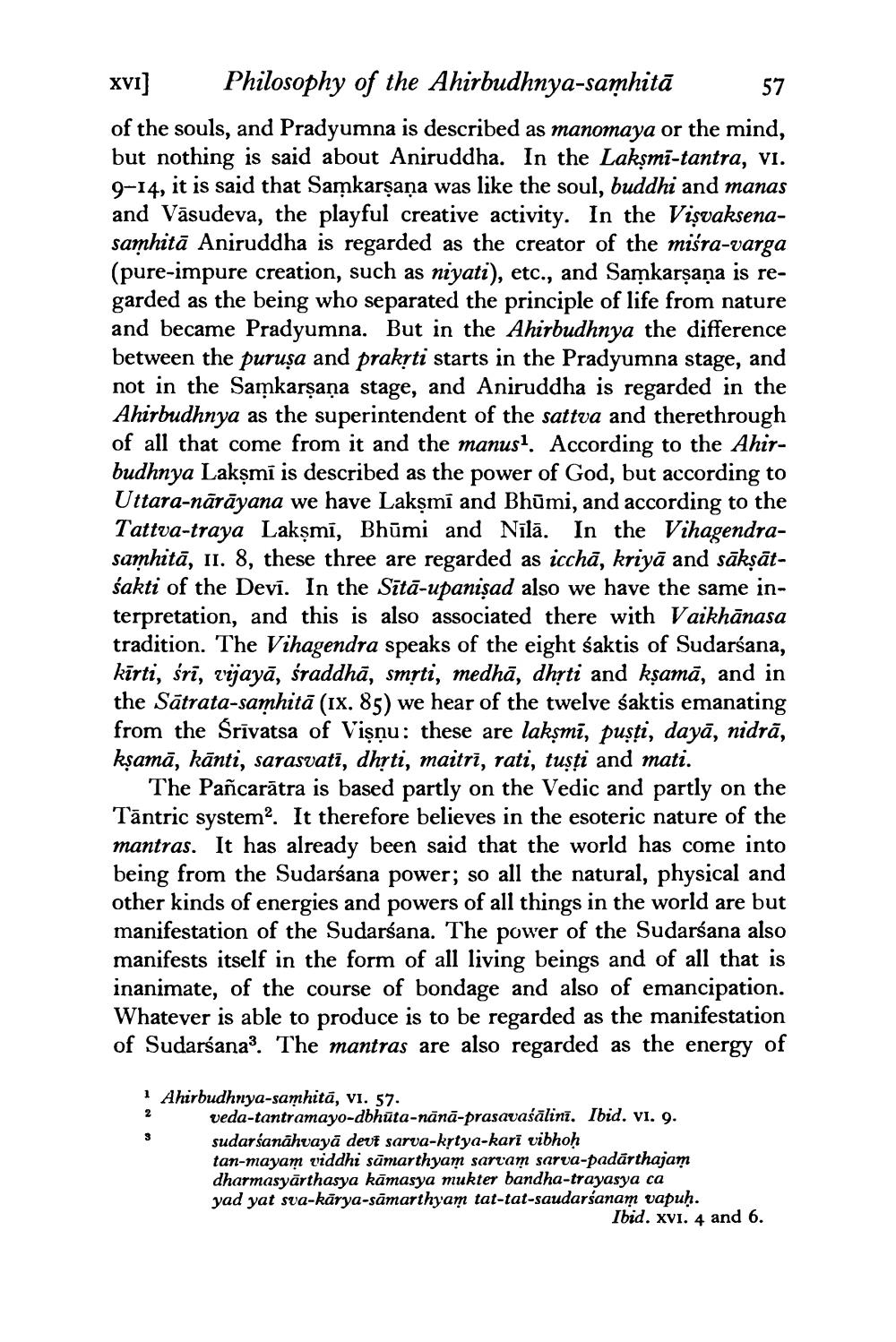________________
xv1] Philosophy of the Ahirbudhnya-samhitā 57 of the souls, and Pradyumna is described as manomaya or the mind, but nothing is said about Aniruddha. In the Lakşmi-tantra, vi. 9-14, it is said that Samkarşaņa was like the soul, buddhi and manas and Vasudeva, the playful creative activity. In the Visvaksenasamhitā Aniruddha is regarded as the creator of the miśra-varga (pure-impure creation, such as niyati), etc., and Samkarşaņa is regarded as the being who separated the principle of life from nature and became Pradyumna. But in the Ahirbudhnya the difference between the purușa and prakrti starts in the Pradyumna stage, and not in the Samkarşaņa stage, and Aniruddha is regarded in the Ahirbudhnya as the superintendent of the sattva and therethrough of all that come from it and the manus1. According to the Ahirbudhnya Lakşmi is described as the power of God, but according to Uttara-nārāyana we have Lakşmi and Bhūmi, and according to the Tattva-traya Lakşmī, Bhūmi and Nīlā. In the Vihagendrasamhitā, 11. 8, these three are regarded as icchā, kriyā and sākṣātŚakti of the Devī. In the Sītā-upanişad also we have the same interpretation, and this is also associated there with Vaikhānasa tradition. The Vihagendra speaks of the eight śaktis of Sudarsana, kīrti, śrī, vijayā, śraddhā, smrti, medhā, dhịti and kşamā, and in the Sātrata-samhitā (ix. 85) we hear of the twelve saktis emanating from the Srīvatsa of Vişnu: these are lakṣmi, puşți, dayā, nidrā, kşamā, kānti, sarasvatī, dhrti, maitri, rati, tusţi and mati.
The Pañcarātra is based partly on the Vedic and partly on the Tāntric system? It therefore believes in the esoteric nature of the mantras. It has already been said that the world has come into being from the Sudarsana power; so all the natural, physical and other kinds of energies and powers of all things in the world are but manifestation of the Sudarśana. The power of the Sudarśana also manifests itself in the form of all living beings and of all that is inanimate, of the course of bondage and also of emancipation. Whatever is able to produce is to be regarded as the manifestation of Sudarśana?. The mantras are also regarded as the energy of
| Ahirbudhnya-samhitā, vi. 57.
veda-tantramayo-dbhūta-nānā-prasavaśālinī. Ibid. vi. 9. sudarśanāhvayā devi sarva-krtya-karī vibhoḥ tan-mayam viddhi sāmarthyam sarvam sarva-padārthajam dharmasyārthasya kāmasya mukter bandha-trayasya ca yad yat sva-kārya-samarthyam tat-tat-saudarśanam vapuh.
Ibid. xvi. 4 and 6.




